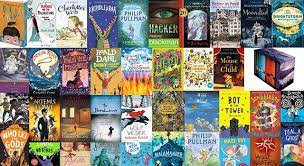In the wake of the COVID-19 pandemic, social distancing has become a necessary practice that has significantly altered our daily lives. This new reality can make it quite challenging for students to maintain their reading habits and continue growing their reading skills. However, with the right approach and strategies, parents and educators can help boost their student’s reading life even during social distancing. Here are some tips to encourage and facilitate reading at home:
1. Create a conducive reading environment: Establish a comfortable and dedicated reading space for your student at home – one that is quiet, well-lit, and free from distractions. Make sure to stock this area with age-appropriate books, magazines, and other reading materials that cater to your student’s interests.
2. Set a regular reading schedule: Encourage your students to establish a consistent daily or weekly reading routine. It could be during breakfast, after dinner, or before bedtime – whatever suits them best. Consistency is key to developing strong reading habits.
3. Incorporate digital resources: Take advantage of e-books, audiobooks, and online libraries that offer a vast array of materials in different formats. These digital tools not only provide diverse options but also make it easier to access books while libraries and bookstores are closed.
4. Join virtual book clubs: Social distancing doesn’t mean your student cannot discuss and explore books with peers. Search for virtual book clubs aimed at their age group or reading level – these online communities will keep them engaged in thoughtful discussions about various books and help improve comprehension skills.
5. Participate in family read-aloud sessions: Bond over stories by taking turns reading aloud from the same book or have older siblings read to younger ones. This shared activity enhances the joy of storytelling and promotes familial connection even when physically apart.
6. Encourage independent reading projects: Allow your student to choose their own reading goals based on their interests. This could involve reading a series of books, exploring a specific genre or author, or researching and creating presentations on various topics.
7. Incorporate reading into daily life: Strengthen your student’s reading skills by integrating reading tasks into everyday activities, such as following recipes, writing shopping lists, or sending emails to family and friends. This real-world application helps solidify the importance of reading in daily life.
8. Prioritize communication and support: Keep an open line of communication with your student about their reading progress and share in their achievements. Regular check-ins and encouragement will motivate them to continue building their reading skills.
In conclusion, social distancing may have disrupted traditional learning environments, but it doesn’t have to halt your student’s growth in reading. Parents and educators can utilize these tips to strengthen the foundations of reading life while maintaining social distance during these unprecedented times.











